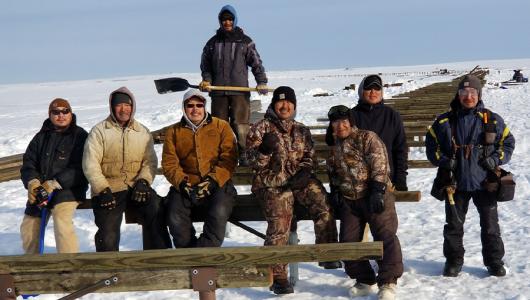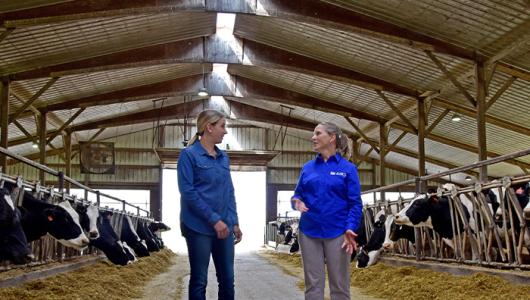This Friday meet Frank and Jaci Mills of Mills Farm in Crawford, Nebraska. The farm was established by Jaci’s parents in 1937 where they produced winter wheat and raised Hereford bulls for breeding. Now, 86 years later, Frank and Jaci continue to grow winter wheat and grass for cattle.
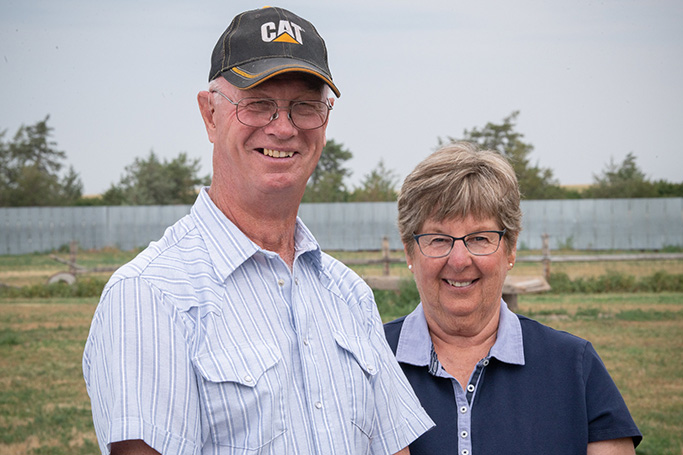
Restoring a Windbreak
There’s a saying that the best time to plant a tree is 50 years ago, and the second-best time is today. Jaci’s family did both. Several rows of trees were planted surrounding their property. The trees grew into a solid windbreak, several rows thick, helping protect their home and livestock from the wind and snow. It also provided habitat for wildlife.
Over time, that windbreak started to see some of its trees die. Jaci and Frank reached out to USDA’s Natural Resources Conservation Service to get the windbreak restored and fill in the gaps left by the dead and dying trees.
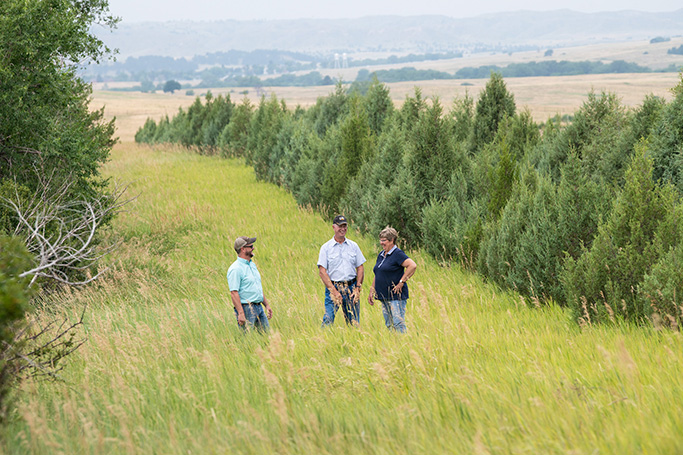
The Mills have worked with USDA to help manage their farm’s natural resources for many years. They worked with USDA’s Farm Service Agency to enroll some of their ground into the Conservation Reserve Program. When that contract expired, they worked with the Upper Niobrara White Natural Resources District to keep that ground in grass. The couple also worked with NRCS through the Environmental Quality Incentives Program for rangeland planting.
When their windbreak needed restoration, the Mills received assistance through EQIP once again. Bryan Kahl, NRCS Resource Conservationist, worked with Frank and Jaci to design a windbreak restoration plan. Funding to implement that plan, which included purchasing and planting the trees, was provided through the program.
Fabric weed barrier was also included in the windbreak restoration plan. This fabric mat extends along the row of trees. The newly planted trees grow up through holes cut in the fabric mat. The fabric helps improve the success of the tree planting by suppressing weeds and helping protect the soil from moisture loss.
“Getting newly planted trees to survive here isn’t easy,” Bryan said. “They need all the help they can get in these harsh conditions. Weed barrier is one way to give them a leg up and help improve the likelihood of the trees becoming established.”
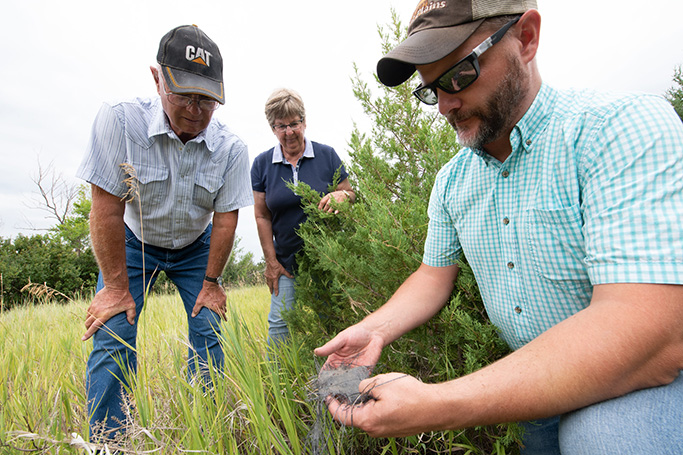
A Return on Investment
Having an established and fully functioning windbreak is important on the plains. That was especially true this past winter when Northwest Nebraska received nearly 6 feet of snow, which far exceeded normal amounts.
“When we get snow, we usually get wind,” Jaci said. “The trees help spread the snow across the field more evenly, meaning moisture is spread across the field. Plus, it helps protect our home and buildings from the bitter wind.”
According to Doak Nickerson, northwest Nebraska district forester with the Nebraska Forest Service, livestock producers experience a big return on their investment when establishing windbreaks.
“With every $1 invested in a livestock windbreak, a beef cow producer sees $7 in return,” he said. “Once temperatures fall below 18˚F the animal becomes stressed and requires more feed to maintain its necessary body temperature. Strong, gusty winds create dangerous windchills and cause extreme stress conditions. With a well-established and maintained windbreak, wind speeds can be reduced by 70%, thus reducing feed costs and animal stress.”
Having a windbreak of healthy, mature trees provides many benefits. Windbreaks reduce energy costs for homeowners, provide food and shelter for wildlife, and protect livestock in winter months. By working with NRCS to restore their windbreak, Jaci and Frank once again have a windbreak that is providing all of the benefits it provided before.
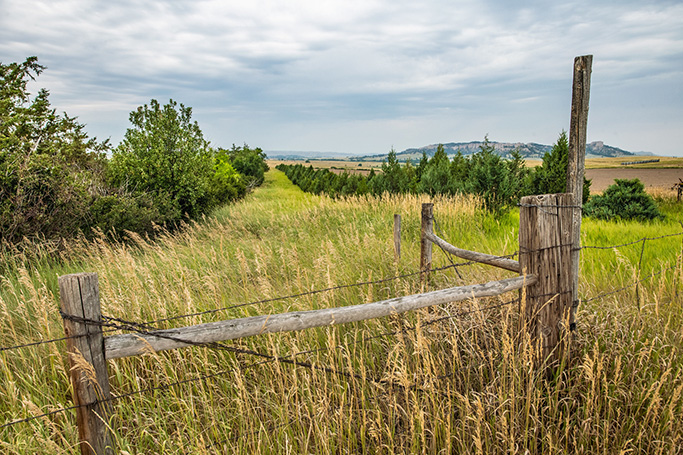
More Information
Visit local farms, ranches, forests, and resource areas through our Fridays on the Farm stories. Meet farmers, producers, and landowners who are working to improve their operations with USDA programs.
Learn about the benefits of conservation practices directly from the farmers, ranchers, and forestland owners applying them with the Conservation at Work video series.
USDA offers a variety of risk management, disaster assistance, loan, and conservation programs to help producers weather ups and downs in the market and recover from natural disasters as well as invest in improvements to their operations. Learn about additional programs.
For more information about USDA programs and services, contact your local USDA service center.
Joanna Pope is the public affairs specialist for NRCS in Nebraska.

